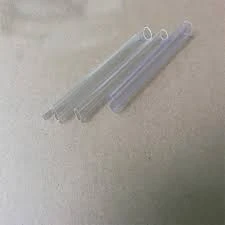Oct . 10, 2024 06:46 Back to list
HDPE Reinforced Spiral Corrugated Pipe for Enhanced Durability and Performance in Various Applications
Understanding HDPE Reinforced Spiral Corrugated Pipe
When it comes to modern piping solutions, HDPE (High-Density Polyethylene) reinforced spiral corrugated pipes have emerged as an innovative option, catering to a wide range of applications in construction, agriculture, and drainage systems. These pipes combine the inherent strengths of HDPE with a unique spiral corrugated design, resulting in a product that offers exceptional durability, flexibility, and ease of installation.
What is HDPE?
High-Density Polyethylene (HDPE) is a thermoplastic polymer known for its strength-to-density ratio. It is resistant to impact and has high tensile strength, making it suitable for various applications. The material is also known for its excellent resistance to chemicals, UV radiation, and corrosion, ensuring a long service life even in demanding environments.
The Spiral Corrugated Design
The spiral corrugated design of these pipes involves a helical structure that provides added strength and rigidity. This design allows the pipe to withstand high internal pressures and external loads without deforming. The corrugations increase the pipe's structural integrity, making it ideal for installations requiring substantial weight-bearing capacity, such as in civil engineering projects.
Advantages of HDPE Reinforced Spiral Corrugated Pipes
1. Durability The combination of HDPE and a spiral structure enhances the pipe's ability to resist deformation and damage from external environmental factors. This feature is especially beneficial in applications subject to heavy traffic loads or substantial ground movement.
hdpe reinforced spiral corrugated pipe

2. Flexibility Despite their strength, these pipes maintain a level of flexibility that makes them easy to handle and install. They can be curved around obstacles, reducing the need for additional fittings and minimizing potential leak points.
3. Lightweight Compared to traditional materials like concrete or steel, HDPE reinforced pipes are significantly lighter, making transportation and installation simpler and more cost-effective.
4. Cost-Effectiveness The longevity and low maintenance requirements of HDPE pipes contribute to overall cost savings. Their resistance to corrosion and biofouling means fewer replacements and repairs, reducing operational costs in the long run.
5. Environmentally Friendly HDPE is recyclable, and the production of these pipes typically consumes less energy compared to other materials, making them a more sustainable choice for infrastructure projects.
Applications
HDPE reinforced spiral corrugated pipes are versatile and can be used in various applications, including stormwater management, sewage systems, agricultural drainage, and even in industrial settings for transporting liquids. Their robust design allows for effective fluid transport while minimizing the risks of leaks or bursts.
Conclusion
In summary, HDPE reinforced spiral corrugated pipes represent a significant advancement in piping technology. Their unique combination of strength, flexibility, and cost-efficiency makes them an ideal choice for a variety of applications. As industries continue to seek sustainable and durable solutions, the adoption of HDPE reinforced spiral corrugated pipes is poised to grow, providing reliable infrastructure for years to come.
-
PP U-channel: Chemical-Resistant, Lightweight & Durable
NewsAug.10,2025
-
Transparent PVC Pipe: Clear Flexible Tubing for Fluids
NewsAug.09,2025
-
Durable PP Rigid Sheet: Versatile & High-Quality Plastic Panels
NewsAug.08,2025
-
Premium Glossy PP Rigid Sheet – Durable & Versatile
NewsAug.07,2025
-
High-Quality HDPE Sheet | Durable Plastic Panels
NewsAug.06,2025
-
High-Precision PVC Rigid Sheets for Vacuum Forming | AI-Optimized
NewsAug.05,2025

